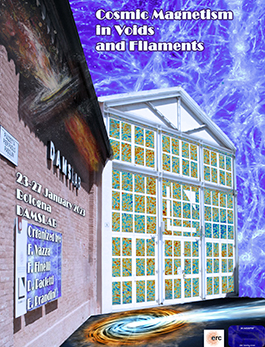Speaker
Description
Gamma-ray astronomy offers one of the keys to studying cosmic magnetism. Although gamma rays are zero charge messengers, their interaction with photons of the cosmic optical and infrared background produces pairs of charged particles. These multi-TeV electrons and positrons are sensitive to the magnetic fields present in cosmic voids, where gamma rays propagate ~3/4 of their journey from extragalactic sources. The cooling of leptons by the inverse-Compton process, which is presumed to be the main energy-loss channel, produces an observational signature of large-scale magnetic fields. Lower limits on the amplitude of these fields are indeed provided today by the search for an excess signal of GeV-TeV gamma rays, possibly extended angularly. With a sensitivity gain with respect to current-generation instruments of a factor of five to ten above 20 GeV, the Cherenkov Telescope Array (CTA) under construction promises unparalleled constraints on cosmic magnetism. In this talk, I describe the potential of the observations planned in the Key Science Projects of the CTA. Not only will CTA's sensitivity and angular resolution allow us to constrain, or even measure, magnetic fields in cosmic voids, but it will also bring precise knowledge of the cosmic backgrounds responsible for the production of charged particles and of the primary gamma-ray spectra of extragalactic sources. This upcoming observational revolution at very high energies will enable both to break new ground on these subjects with CTA alone and also to take a retrospective look at the multi-wavelength emission of the most stable sources in time.

